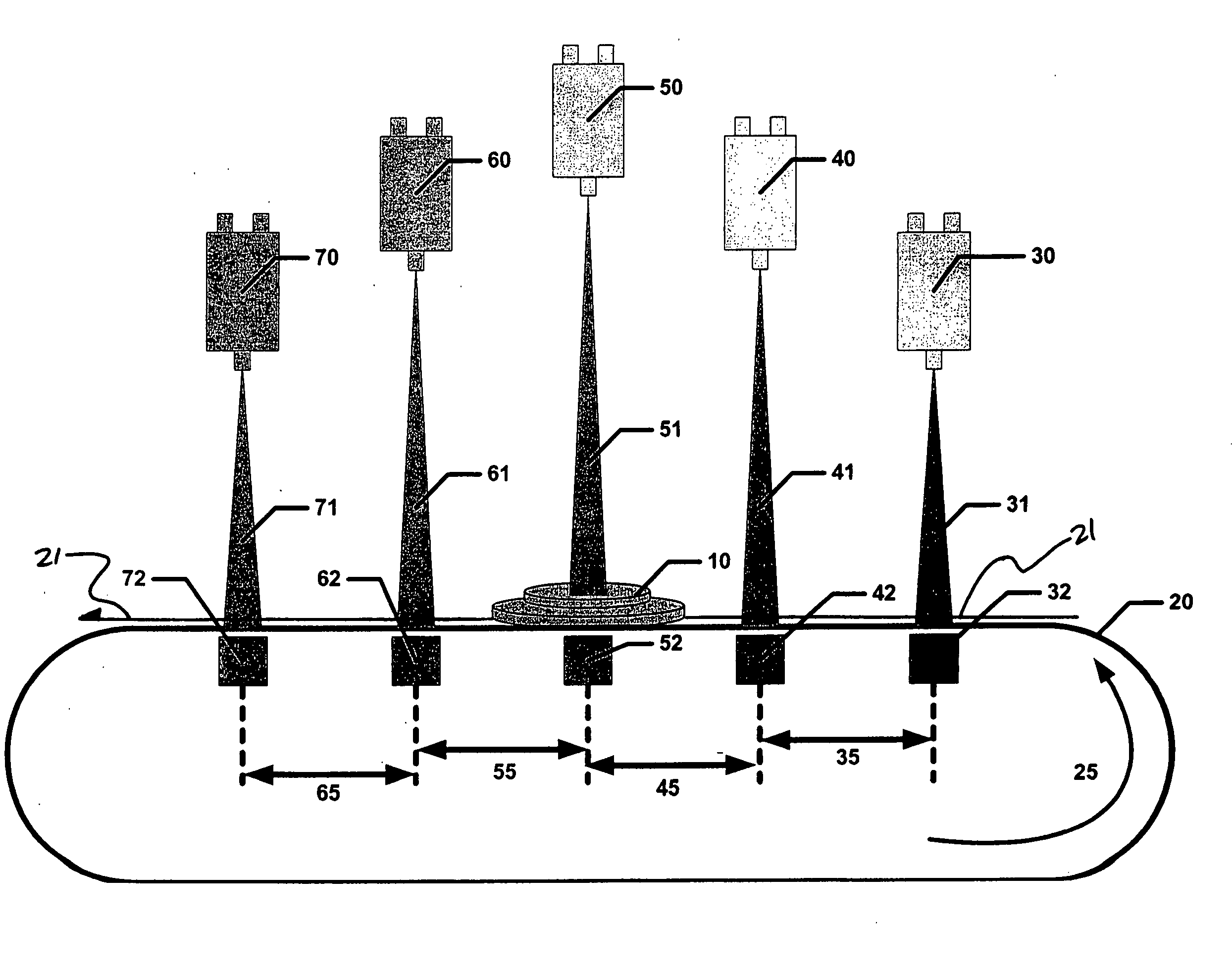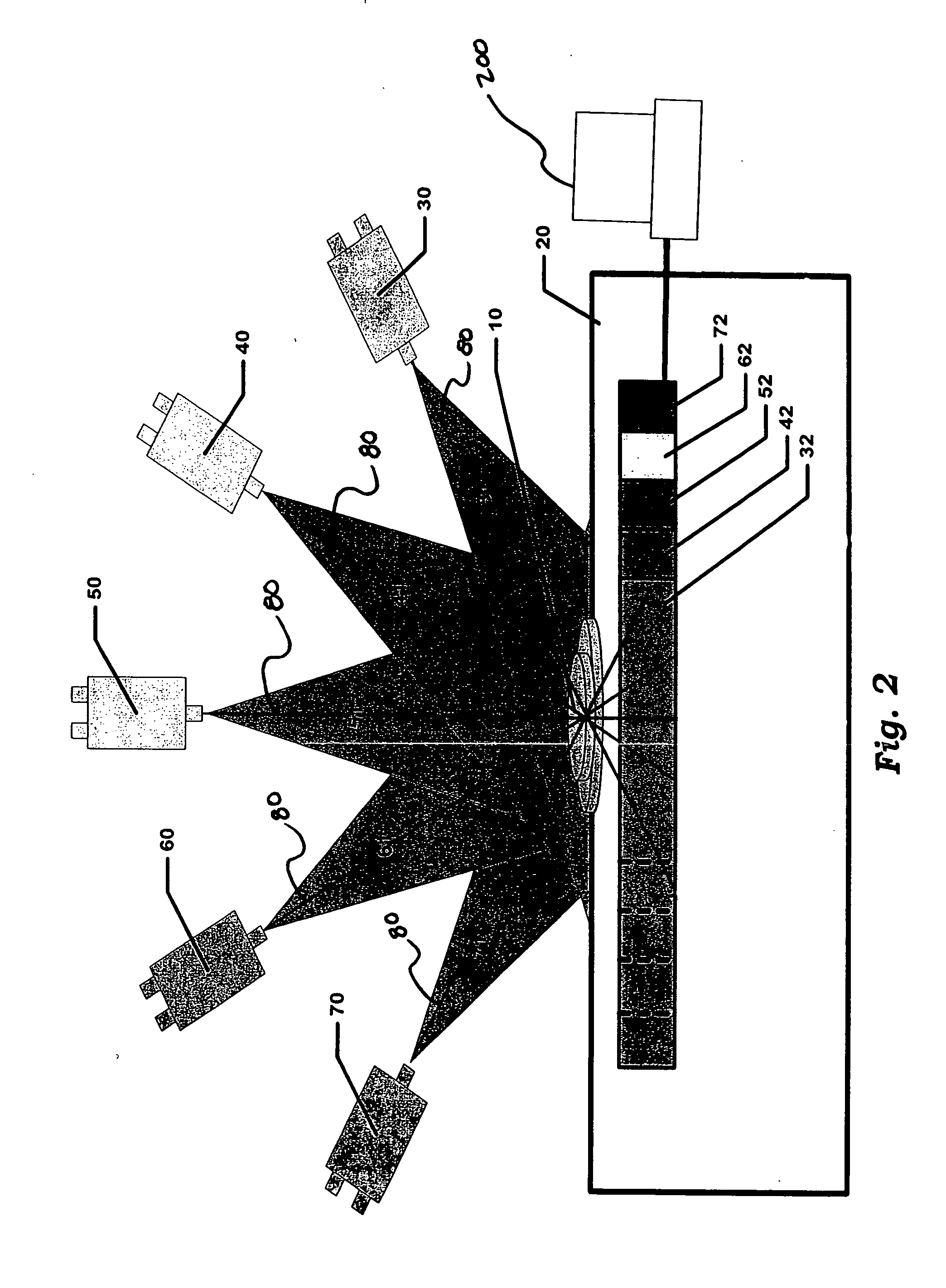System for automated detection of embedded objects
a technology for embedded objects and detection systems, applied in tomography, instruments, machines/engines, etc., can solve the problems of inability to perform at-speed inspection and too slow processing facilities using rotating devices to collect slices, and achieve the effect of modifying conventional ct scanning and high production rates
- Summary
- Abstract
- Description
- Claims
- Application Information
AI Technical Summary
Benefits of technology
Problems solved by technology
Method used
Image
Examples
Embodiment Construction
The present invention can be more readily understood by reference to FIGS. 1-10 and the following description. While the present invention is not necessarily limited to such an application, the invention will be better appreciated using a discussion of example embodiments.
FIG. 1 depicts a side view of a preferred embodiment of the present invention. For simplicity, this figure depicts five X-ray emitter / detector pairs. However, for highly accurate object detection, it is preferred that a greater number of X-ray emitters and detectors be used. In the preferred embodiment, the specimen 10 is transported along a transport path 21 on a conveyor 20 in a direction 25 with a plurality of emitters 30, 40, 50, 60 and 70 directed at various angles toward the transport path 21 of the specimen 10. The plurality of detectors 32, 42, 52, 62 and 72 receive and record the transmitted energy from the plurality of fan-shaped X-ray beams 31, 41, 51, 61 and 71 as the specimen 10 moves through the ima...
PUM
 Login to View More
Login to View More Abstract
Description
Claims
Application Information
 Login to View More
Login to View More - R&D
- Intellectual Property
- Life Sciences
- Materials
- Tech Scout
- Unparalleled Data Quality
- Higher Quality Content
- 60% Fewer Hallucinations
Browse by: Latest US Patents, China's latest patents, Technical Efficacy Thesaurus, Application Domain, Technology Topic, Popular Technical Reports.
© 2025 PatSnap. All rights reserved.Legal|Privacy policy|Modern Slavery Act Transparency Statement|Sitemap|About US| Contact US: help@patsnap.com



